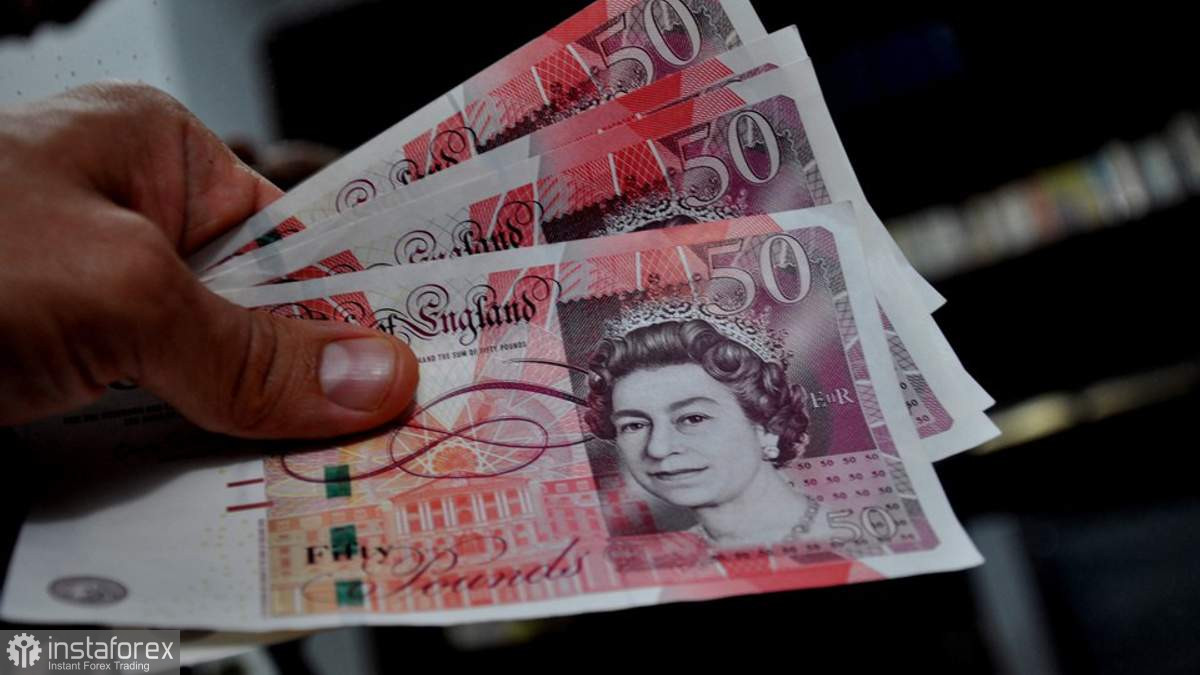The British pound and the euro continue to decline against the US dollar. This is primarily due to concerns about the US Federal Reserve's decision to maintain its strict policy. Contrarily, many investors anticipated an easing of this policy at the beginning of the autumn. Recent statistics from the UK and the eurozone also fail to encourage traders.
Yesterday's UK borrowing data was below official forecasts. This might allow Chancellor Jeremy Hunt to implement tax cuts. According to the Office for National Statistics, the budget deficit from April to July this year was £56.6 billion ($72.3 billion). This is £11.4 billion less than what was anticipated in March.

The deficit for July alone was £4.3 billion, lower than the average forecast of £5 billion. However, it is still £1.1 billion higher compared to the same period last year. Considering the expenses awaiting the UK this autumn, especially due to a sharp increase in natural gas prices, the government might again have to compensate for high energy prices. Thus, the ONS report could hardly be viewed as positive. There are also concerns that the total treasury debt might exceed the size of the economy by the second half of the year, which is quite bad for the pound's future.
A silver lining is that the £11 billion deficit may raise hopes for UK tax cuts, a campaign promised by Prime Minister Rishi Sunak. However, as noted earlier, these figures will not alleviate concerns about the UK's borrowing rate. The country's debt is £2.58 trillion, or 98.5% of GDP. Great reliance on bonds during inflation means the UK pays more on its obligations than any other developed economy.
Hunt's next statement on this topic is scheduled for November. However, a lot may change by this time. Some members of the ruling Conservative Party, which is lagging in polls behind the Labor Party by double digits, have urged Prime Minister Rishi Sunak to cut taxes ahead of the elections.
The report also said that the rapid wage growth helped improve the state of public finances in the first four months of the current fiscal year. Income from profit tax and capital gains brought in £10 billion more compared to last year. Higher prices led to a £5 billion increase in VAT, and the corporate tax hike from 19% to 25% in April brought an additional £4.4 billion.
Regarding today's technical picture for GBP/USD, the pound sterling continues trading within the channel. The pound sterling will rise only after bulls gain control over the 1.2770 level. Regaining this range will boost hopes for recovery to 1.2800, after which we can talk about a surge to around 1.2840. If the pair falls, bears will attempt to take control over 1.2720. If they succeed, a breakout of this range will hurt bulls' positions and push GBP/USD to a low of 1.2680, with the potential to drop further to 1.2650.
Meanwhile, the pressure on the euro has returned. To regain control, buyers should keep the price above 1.0870. This would pave the way to 1.0910. From there, the price may climb to 1.0950. However, it would be quite difficult without support from major traders. If the pair drops, I expect significant actions from major buyers only around 1.0840. If they fail to be active, it would be wise to wait for a low of 1.0800 or consider long positions from 1.0770.
 English
English 
 Русский
Русский Bahasa Indonesia
Bahasa Indonesia Bahasa Malay
Bahasa Malay ไทย
ไทย Español
Español Deutsch
Deutsch Български
Български Français
Français Tiếng Việt
Tiếng Việt 中文
中文 বাংলা
বাংলা हिन्दी
हिन्दी Čeština
Čeština Українська
Українська Română
Română

